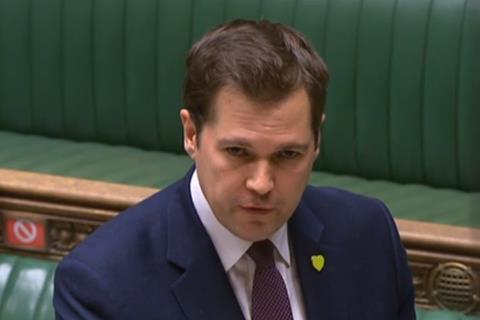Cost of regulation could affect scheme viability as impact assessment shows burden on industry in first three years
Fears over the cost of the government’s proposed new building safety system are growing after it emerged that the reforms could cost the industry more than £1bn in their first three years.
An impact assessment issued alongside yesterday’s Building Safety Bill estimates that the residential development industry faces two-year transitional costs of £731m in moving to the new system, with an ongoing annual regulatory burden of £284m thereafter. The costs would add up to a bill of more than £3bn over the next decade.

These costs are on top of the £2bn developer levy already set out by the government, which was consulted on by the Treasury in April, and a further “Gateway 2” levy expected to be paid by developers at the point of planning permission for high-rise buildings.
The government yesterday published the long-awaited Building Safety Bill, which is designed to put in place a new regulatory system for high-rise buildings, including the creation of a building safety regulator, and more protection for residents.
Law firm Winckworth Sherwood said developers will be “hit from all angles” by the new system, with costs likely to impact on scheme viability.
The impact assessment says the overall transitional cost of moving to the new system is estimated at £812m over two years, with the vast majority falling on the private sector. Much of this transitional cost is made up from the requirement for owners of existing and new buildings to develop safety cases for all of England’s 12,000 high-rise buildings covered by the new regime.
The department estimates that these buildings include around 444,000 homes privately owned by leaseholders.
The impact assessment says estimated ongoing annual costs of £426m, of which two-thirds will be borne by industry, are incurred for a combination of reasons, including the development of safety cases, the costs of meeting the new “gateway” regulations for new buildings, the costs of construction products regulation, and the costs of duty holders under the new regime.
>> See also: Jenrick’s developer levies are no easy answer to the cladding crisis
>> Building Safety Bill is “industry’s opportunity to embrace far-reaching change”
This figure also includes the estimated £60m annual cost of the new regulator, around 90% of which is expected to be recovered from industry.
Charis Beverton, partner at Winckworth Sherwood, said the system “will inevitably increase the cost for developers”, with tighter control of building products very likely to increase the price of approved materials, and maintenance of the “golden thread” of building information adding “time and money to every build”.
She said: “They will be hit from all angles, via the new developer levy, and with greater requirements for competency and training increasing already high labour costs,” adding that the combination of costs “may remove SME housebuilders from the high-rise market altogether.
“At the moment, the strength of the sales market might sustain extra costs, but it won’t take a lot for it to affect the viability of new schemes. The government needs to be careful that its understandable aims on safety don’t stymie innovation in materials and building practices, limiting the ability of the industry to deliver green, efficient homes.”
Developers have already warned that the introduction of new developer levies must be done in a way that ensures developers are not forced to “pay twice” for repairs to existing blocks. Others have also raised concerns that the measures could have unintended consequences on the industry.
While the government has said it expects its new developer levy to raise £2bn over the next ten years, it has not said how much it expects to be raised from the Gateway 2 levy.
All builders making a profit of more than £25m from residential development will have to pay the levy, even though the Home Builders’ Federation estimates that major listed builders have already contributed more than £500m to solving problems in existing homes.

Launching the legislation yesterday, housing secretary Robert Jenrick (pictured) said: “The new building safety regime will be a proportionate one, ensuring those buildings requiring remediation are brought to an acceptable standard of safety swiftly, and reassuring the vast majority of residents and leaseholders in those buildings that their homes are safe.”
Tory MP Stephen McPartland hit out at the reforms, however, saying they were a “sticking plaster” that would not adequately help leaseholders living in blocks affected by the crisis.











No comments yet